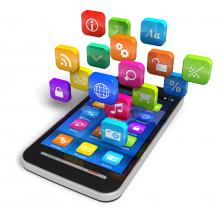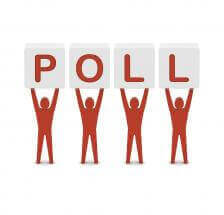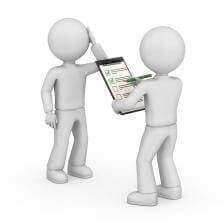How Polls and Surveys Can Increase Audience Participation
Polling is a great way to keep your audience involved. The Public Speaker shares two inspiring and creative examples of how surveying listeners can lead to imrpoved participation and engagement.
Imagine this: You’re sitting in church one Sunday morning listening to a sermon. The pastor takes a brief pause and says, “Would everyone please get out your smartphones and start texting?” You think you must have misunderstood, but then you look down the row and see everyone texting openly. What’s going on?
Sponsor: This episode is brought to you by lynda.com. Learn what you want, when you want, with
access to over 2,1000 high-quality online courses–all for one low monthly price. To try it free for 10 days, visit lynda.com/speaker.

I’ve discussed the benefits of using polling to enhance your presentations before. We went overboth hi- and low-tech methods of polling and about what you gain by gathering information from your audience in real time.
Today, we’ll take a closer look at Pastor Alex’s example. Then we’ll talk about some innovative ways polling is being used in education.
Polling Software at Houses of Worship
Pastor Alex likes to provide audience members with clipboards of handouts and pens and asks them to look at the passage they’re studying and make some observations. He wants to show them how to become good observers and interpreters. After about 5 minutes of reading, he has them answer some questions and make notes.
While the audience is busy circling, highlighting, and noting, Pastor Alex puts a poll question on the big screen in front of them. He likes to use open-ended questions to foster thoughtful answers. One example is:
“What observations strike you from this passage?”
While traditional polling makes use of questions with a limited number of responses, such as True and False, multiple choice, or number ratings, I think Pastor Alex’s use of open-ended questions help get his audience thinking and talking (or in this case, texting). Pastor Alex asks the audience to text him their answers. Here’s what happens next:
“After 5 minutes is up, I read over the texted in responses and then I invite others to offer their observations. Then we have a very open and lively discussion with all 150-190 people in the room that’s driven largely by the observations that are made in real time rather than the preacher guy just telling them what it says from up-front.“
One big reason Pastor Alex likes to use polling software is that it helps people who otherwise might not participate to get involved. Many people would not raise their hand to answer a question in a crowd, but would feel comfortable texting their answer to the pastor. It also gives individuals more ownership over the message.
Polling Software in Education

Polling can be a very effective way to enhance student engagement. It can help the teacher to learn what an entire class thinks about a topic rather than relying on a couple of vocal students.
When mobile technology such as cell phones and tablets first started showing up in the classrooms, it wasn’t the teachers using them. Students would bring technology to school and it started to become a distraction.
At first some schools considered banning technology in the classrooms, but Professor Methot describes an “A-ha moment” that made them change course. She and her colleagues decided that the “If you can’t beat them, join them” method would be more effective. Students were encouraged to use technology, but now their professors would be joining in.
While the university researched many different technologies and applications for polling in the classroom, they ultimately chose a software solution because it didn’t require expensive hardware, was compatible with most devices, and was easy to use. An additional bonus was that poll results could be embedded directly into a PowerPoint presentation.
If your organization has already invested in a hardware or software polling solution (for example, iClickers), you can still use these tips to make polling even more effective in the classroom or conference room:
-
Taking attendance. This was the school’s first use of the application and when that proved successful, they moved on to more educational uses.
-
Participant responses to questions. For example, the instructor/facilitator would read a question and offer response options X, Y, and Z. Once the students have made their choice, the instructor might say “X was the correct answer. If you answered X, can you tell us how you came up with it?” This approach helps quieter students join in and participate in classroom discussion.
-
Reading comprehension. The instructor will give a reading assignment and then use polling to make sure the class understood the text. This also helps teachers learn what they need to cover more in-depth.
-
Class participation. The instructor asks a series of questions over multiple days. Students with a certain percentage of correct answers are given participation points that count towards their grade.
I asked Professor Methot if she had concerns about using technology like this in the classroom. Her biggest concern was that students might find ways to cheat and have someone else answer for them. The school is constantly looking for more efficient ways of monitoring cheating. But in Professor Methot’s experience, the benefits clearly outweigh the risks.

This is Lisa B. Marshall, Helping you maximize sales, manage perceptions, and enhance leadership through keynotes, workshops, books, and online courses. Passionate about communication; your success is my business. If you want even more success in your life, I invite you to read my latest book, Smart Talk and listen to my other podcast, Smart Talk: Inspiring Conversations with Exceptional People.



 Taking attendance. This was the school’s first use of the application and when that proved successful, they moved on to more educational uses.
Taking attendance. This was the school’s first use of the application and when that proved successful, they moved on to more educational uses.



